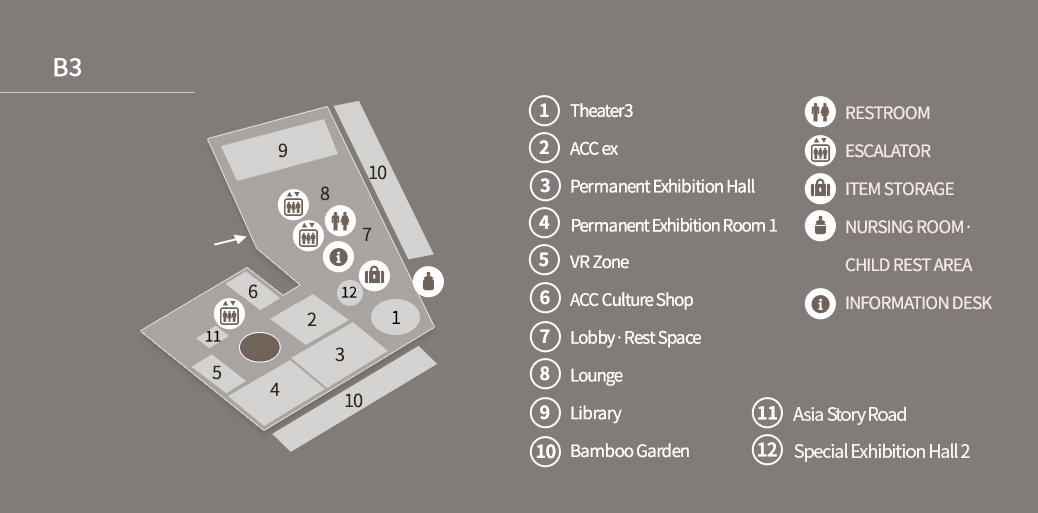< Modern Architecture from the View Point of Photographers >
This ACC Special Exhibition showcases the changes in modern and contemporary architecture of Korea and the lives of people reflected in them. The ACC has been collecting photographs under the theme “Korean Photographers” for 3 years, from 2014 to 2016. The works of Jeon Jae-hong, Kim Ki-chan, Lee Jeong-lok, and Jo Choon-man that capture the modern and contemporary architecture of Korea are featured in this exhibition.

- DateJul. 20 (Thu) – Sep. 20 (Wed), 2023
- Time(Tue–Sun) 10 AM – 6 PM
(Wed & Sat) 10 AM – 8 PM
* Closed on Mondays - PlaceSpecial Exhibition Hall 2
- Age LimitAll ages
- Price Free
- TicketFree admission
- Contact+82-1899-5566
About
The modern and contemporary architecture of Korea has been changing, influenced by society, culture, and industrial structures. During the Japanese Occupation after opening its ports, infrastructure in the Korean Peninsula for Japan's expropriation of resources has been installed. After liberation, the population increase led to the rise of demand of apartment houses, and traditional housing in farmland slowly changed to unique housing forms adapting the Western housing style, as part of the Saemaul Undong movement, a political initiative to modernize the rural environments. Since the 1980s, large-scale industrial buildings began to appear with the centralization of heavy industry in the industrial structure.
This exhibition has been designed to display the changes in the modern and contemporary architecture of Korea seen through the eyes of four photographers. Explore the past and traces of people through the works.
Works
Starting with the “Japanese Rice Farm Building” exhibition in 2004, Jeon Jae-hong has been steadily recording the traces of the Japanese Occupation in the areas of Jeolla-do and Chungcheong-do. The “Imperial Human” exhibition in 2021 also shows such evidence. In 2021, Jeon published <Little Boy> that conveys the series of “Imperial Human,” Imperial Plains,” and “Imperial Tower of Babel,” records of the victims of Japanese imperialism.

Since 1968 to 2005, Kim Ki-chan recorded the changes in Seoul for over 30 years until he passed away at the age of 68. He held the solo exhibition <The World of Alleys> for six times and published photobook series with the same title and <Scenes in Front of the Station> in 2003.

Lee Jeong-rok has recorded the changes in traditional housing from the housing improvement project run as part of the Saemaul Undong movement since the 1970s. His main series include <Namnyeokttang>, <Glocal Site>, <Life Tree>, and, <Nabi> and his work collection <Peculiar Scene> (2019).

Jo Choon-man has recorded the architecture of steel, iron, petroleum, and chemical facilities constructed during the industrialization process.
Based on his experience working in the industrial field as a pipe welder since 1974 at the age of 18, Jo Choon-man has held multiple solo exhibitions for the <Industry Korea> series that has recorded the industrial facilities of Korea. His publications include <Townscape> (2001), <Jo Choon-man’s Heavy Industries> (2014), and <Völklingen: Natural History of Industry> (2018).

Place Info.
ACC Archive&Research, Special Exhibition Hall 2


01/


